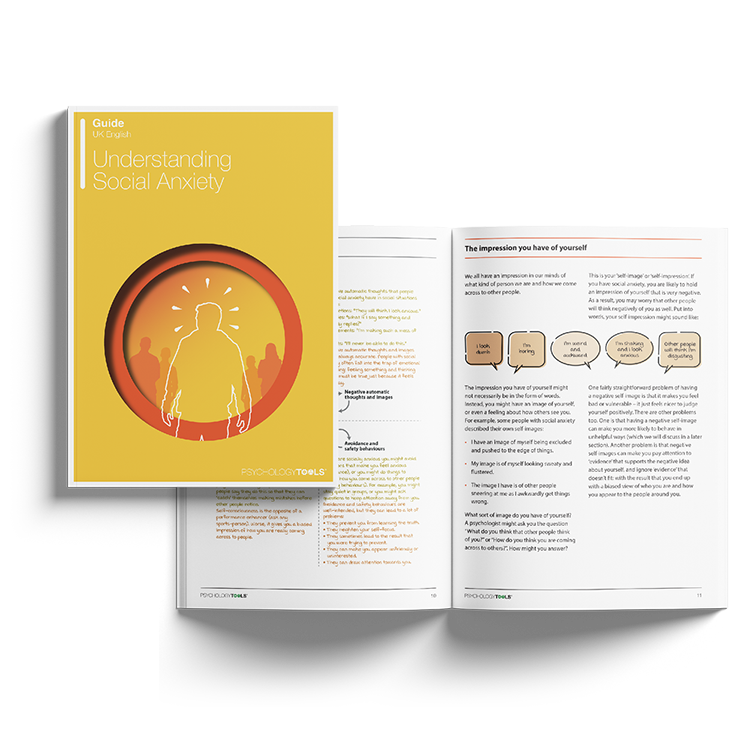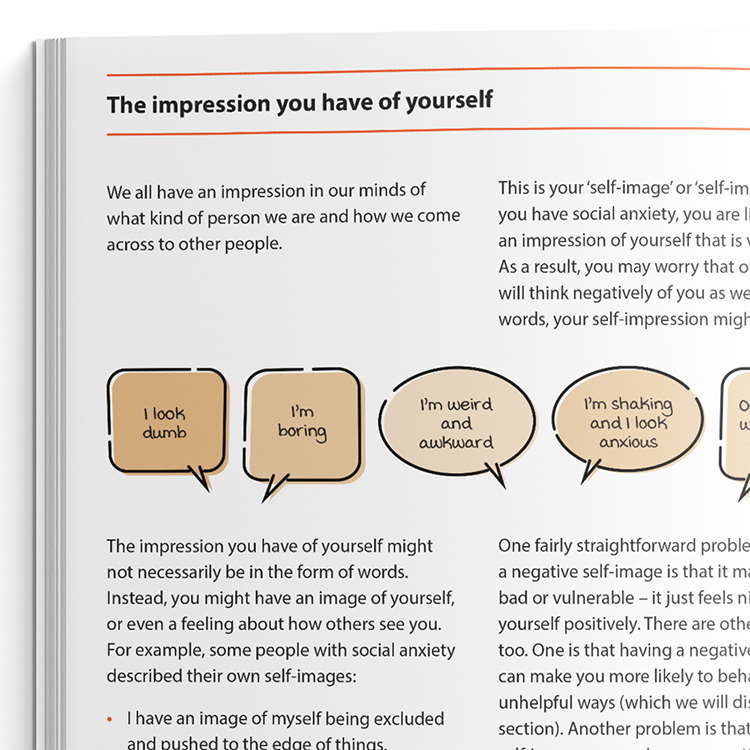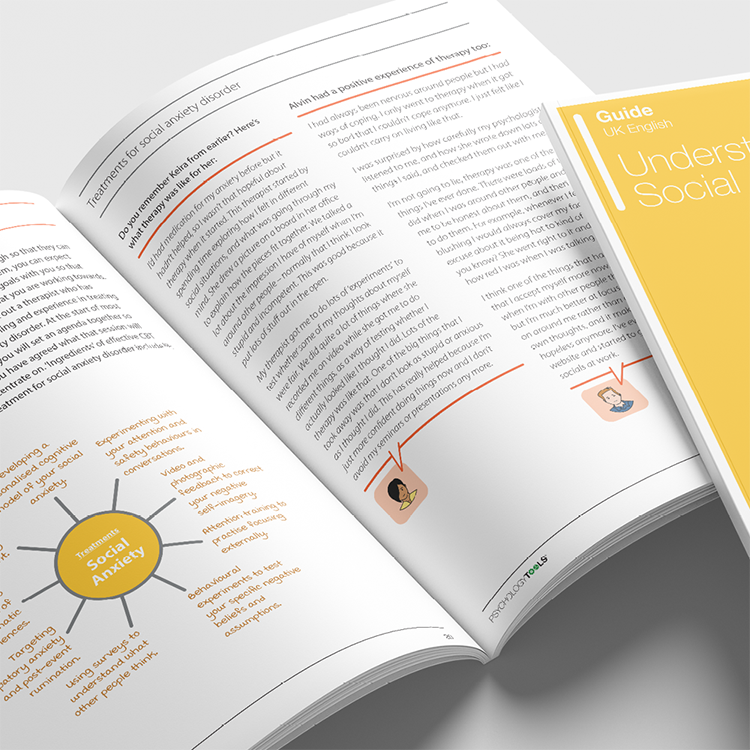Guide (PDF)
A psychoeducational guide. Typically containing elements of skills development.
An accessible and informative guide to understanding social anxiety, written specifically for clients.

A psychoeducational guide. Typically containing elements of skills development.
To use this feature you must be signed in to an active account on the Advanced or Complete plans.

Our ‘Understanding…’ series is a collection of psychoeducation guides for common mental health conditions. Friendly and explanatory, they are comprehensive sources of information for your clients. Concepts are explained in an easily digestible way, with plenty of case examples and accessible diagrams. Understanding Social Anxiety is designed to help clients with social anxiety to understand more about their condition.
This guide aims to help clients learn more about social anxiety disorder (SAD). It explains what SAD is, what the common symptoms are, and effective ways to address it, such as cognitive behavioral therapy (CBT).
Designed to help clients understand and learn more about social anxiety.
Identify clients who may be experiencing social anxiety disorder (SAD).
Provide the guide to clients who could benefit from it.
Use the content to inform clients about social anxiety and help normalize their experiences.
Discuss the client's personal experience with social anxiety.
Plan treatment with the client or direct them to other sources of help and support.
Experiencing some degree of anxiety in social situations is common. However, when social anxiety becomes more intense than typical shyness and begins to interfere with an individual’s ability to function and participate in everyday life, it may indicate the presence of social anxiety disorder - one of the most prevalent anxiety disorders.
Epidemiological data suggest that between 2-7% of the population experience social anxiety disorder each year. Encouragingly, cognitive behavioral therapy (CBT) is recognised as an effective psychological treatment for social anxiety disorder, offering substantial relief for many clients.
The Understanding Social Anxiety guide has been developed to support clients in developing a clearer understanding of their experiences. In addition to providing a description of common symptoms and outlining evidence-based treatment options, the guide explores key maintenance processes thought to sustain social anxiety, helping clients to better understand the factors that keep their difficulties going.

Just enter your name and email address, and we'll send you Understanding Social Anxiety (English US) straight to your inbox. You'll also receive occasional product update emails wth evidence-based tools, clinical resources, and the latest psychological research.
Working...
This site uses strictly necessary cookies to function. We do not use cookies for analytics, marketing, or tracking purposes. By clicking “OK”, you agree to the use of these essential cookies. Read our Cookie Policy